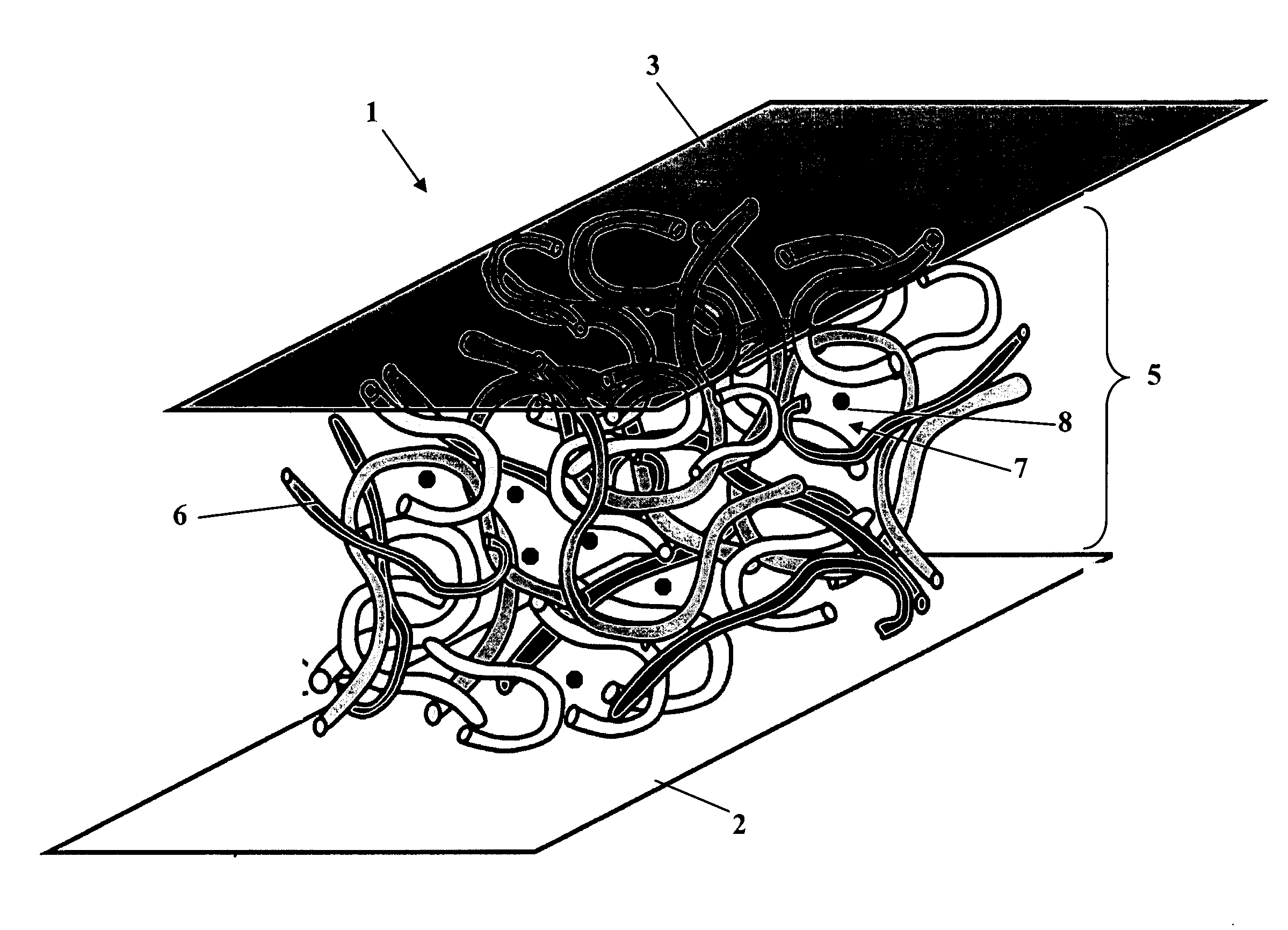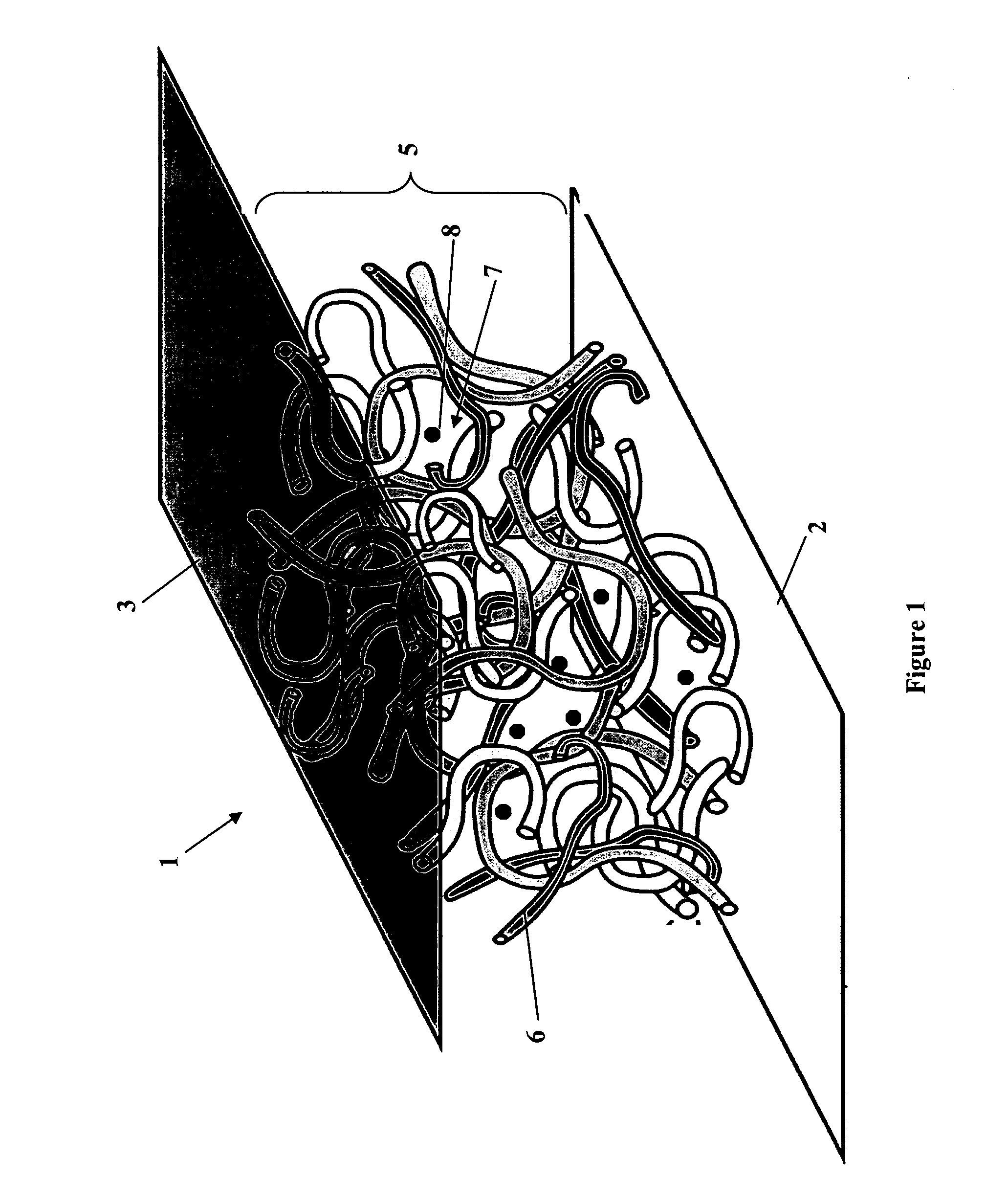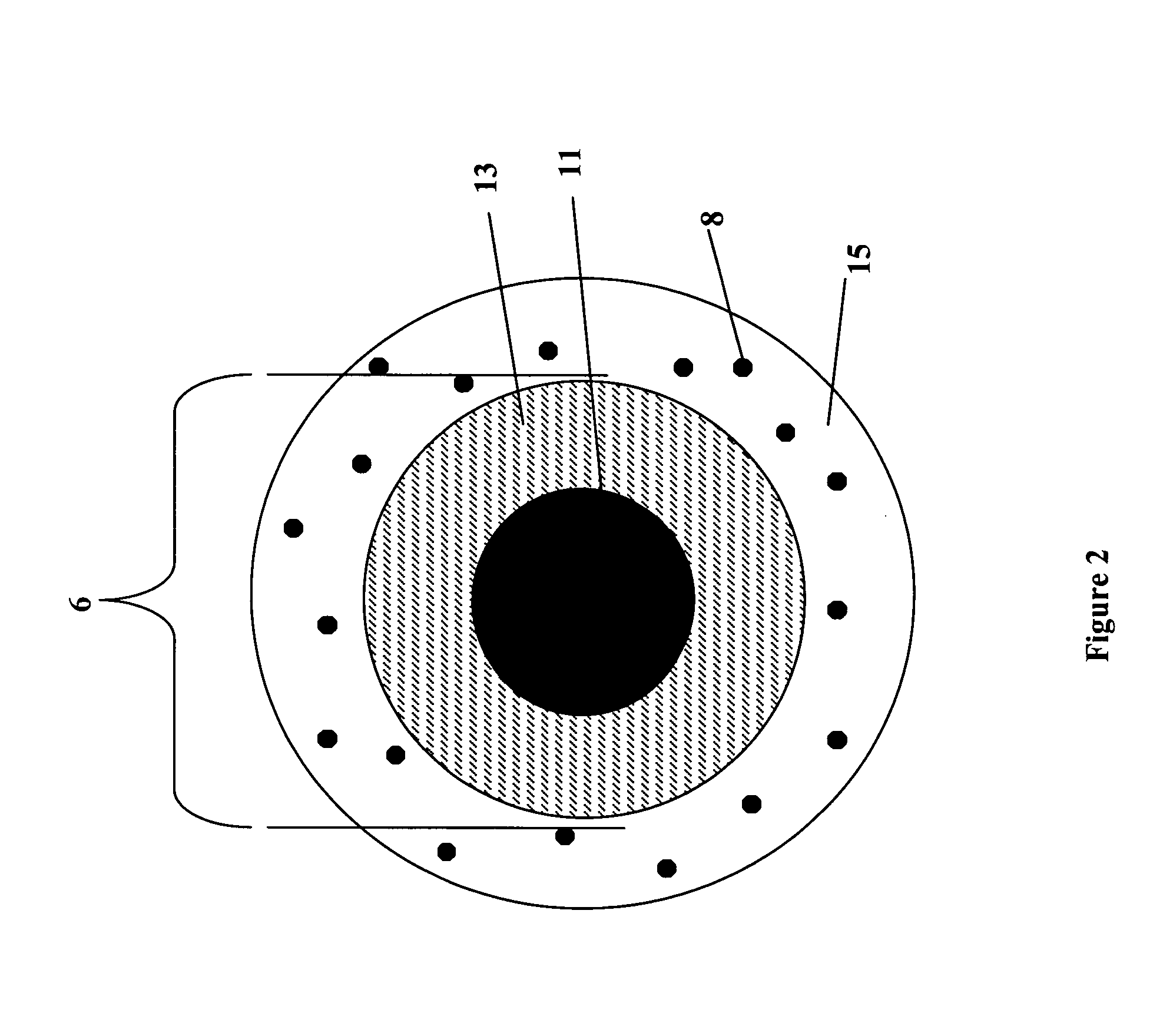Three dimensional battery
a three-dimensional battery technology, applied in the field of three-dimensional batteries, can solve the problems of particle agglomeration, slow ions transport, and energy storage capacity
- Summary
- Abstract
- Description
- Claims
- Application Information
AI Technical Summary
Benefits of technology
Problems solved by technology
Method used
Image
Examples
examples
[0046]The following examples further illustrate the invention but should not be construed in any way as limiting its scope.
[0047]FIG. 10 shows an embodiment of a three-dimensional battery device 76 including an anode current collector 80, a cathode current collector 84, and a network of fibers 88. The anode current collector 80 includes copper. The cathode current collector 84 includes nickel. The network of fibers 88 can be formed from LiNi0.7Co0.302 fibers. The fibers can be deposited by electrospinning fibers on the cathode current collector 84. The sol-gel precursor solution can include metal acetates, poly(vinyl acetate) binder, and water. The network of fibers 88 can be heat treated at 600° C. to yield a continuous fiber network in direct contact with the cathode current collector 84. PPD can be added coat the fibers by electrochemical polymerization to form the separator / electrolyte. Graphite anode nanoparticles (not shown) can be infiltrated into pores defined in the fiber n...
PUM
| Property | Measurement | Unit |
|---|---|---|
| Temperature | aaaaa | aaaaa |
| Temperature | aaaaa | aaaaa |
| Thickness | aaaaa | aaaaa |
Abstract
Description
Claims
Application Information
 Login to View More
Login to View More - R&D
- Intellectual Property
- Life Sciences
- Materials
- Tech Scout
- Unparalleled Data Quality
- Higher Quality Content
- 60% Fewer Hallucinations
Browse by: Latest US Patents, China's latest patents, Technical Efficacy Thesaurus, Application Domain, Technology Topic, Popular Technical Reports.
© 2025 PatSnap. All rights reserved.Legal|Privacy policy|Modern Slavery Act Transparency Statement|Sitemap|About US| Contact US: help@patsnap.com



